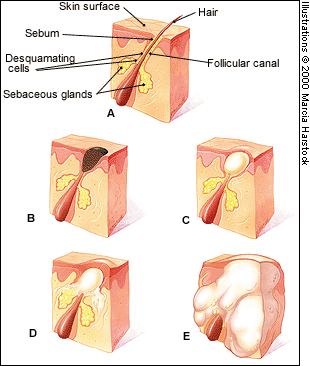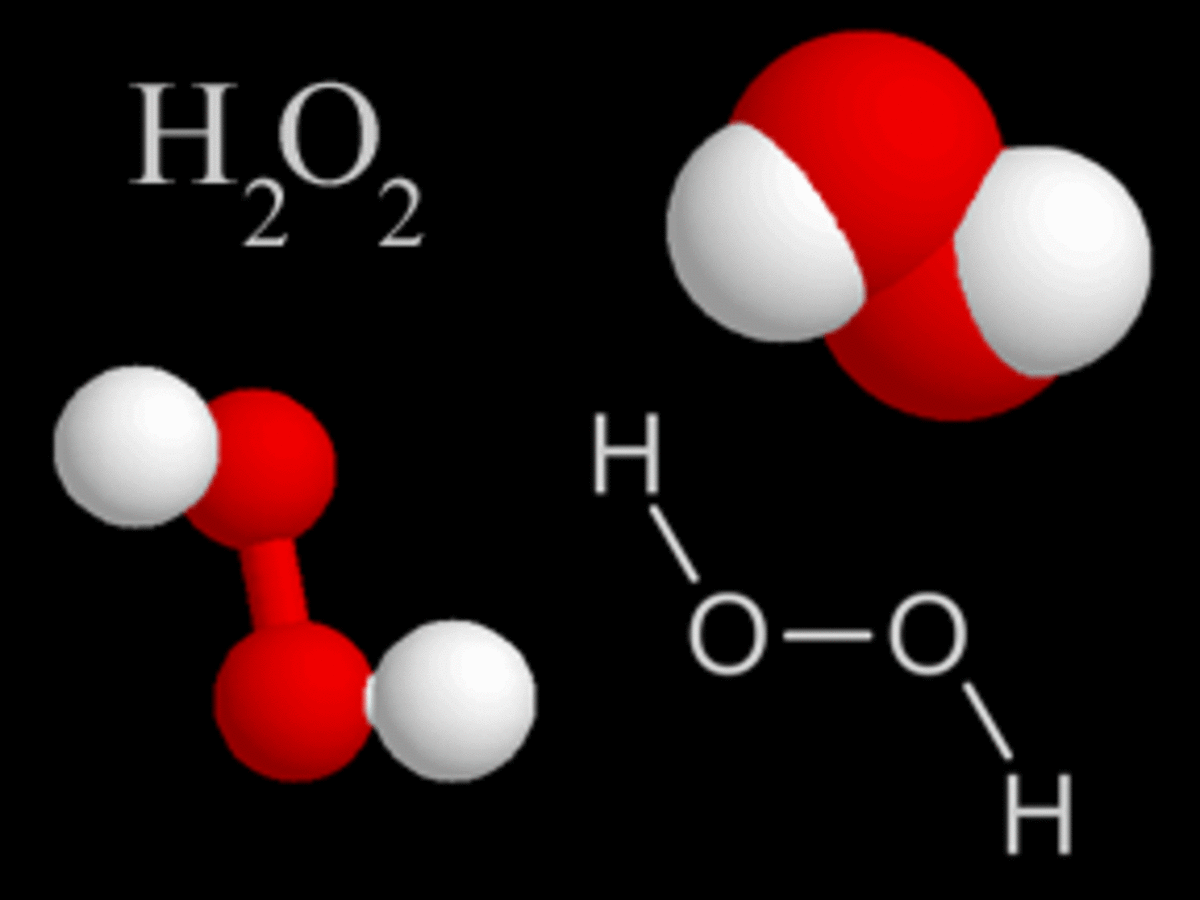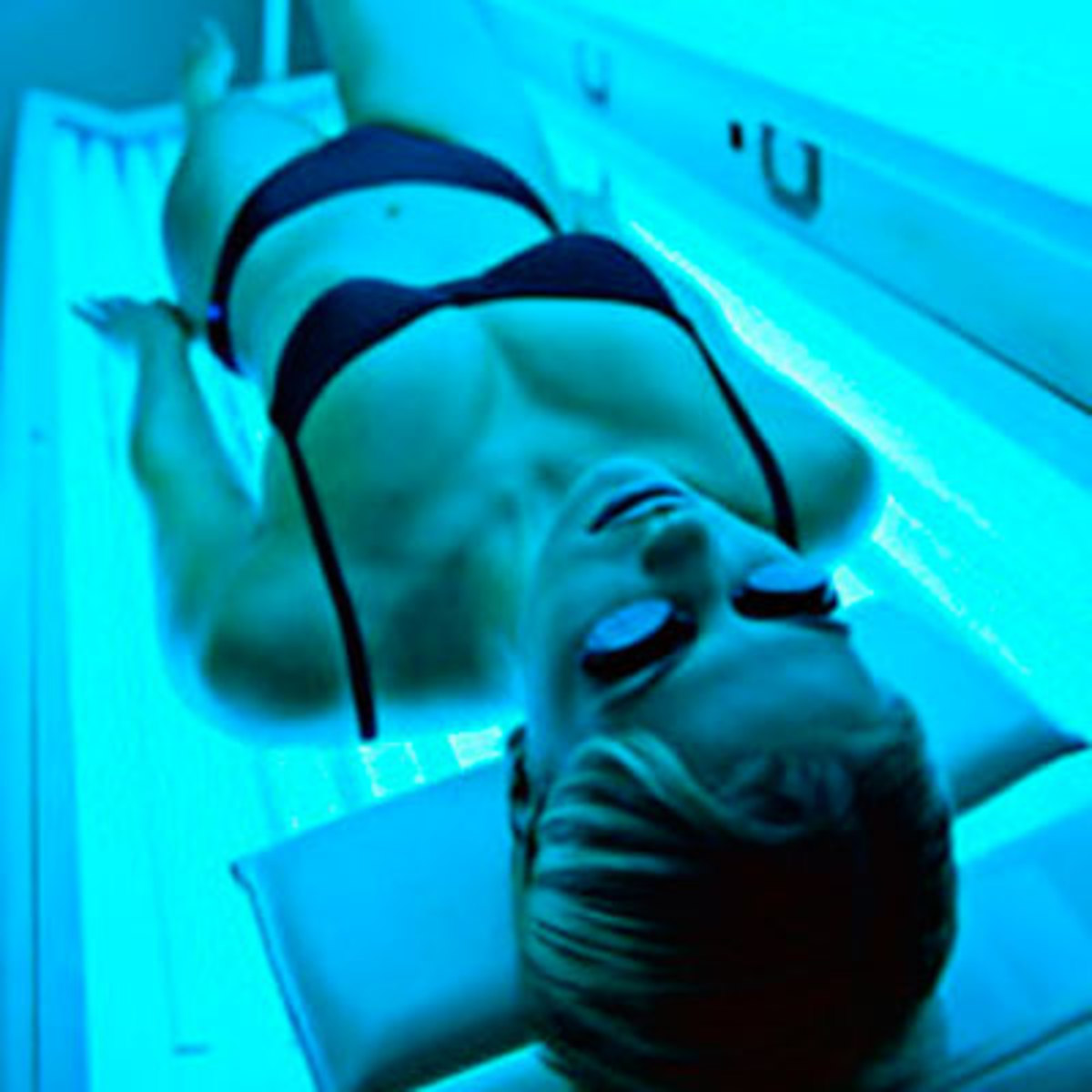What Causes Acne and Blemishes?
Some Facts About Acne
One of the biggest misconceptions around Acne is that it only affects Teenagers. Sadly for many people, it extends far beyond their teens and into later life. Acne is the most common skin condition amongst older children, teenagers and young adults. Some people may even find that they were hardly affected by Teenage Acne and only started to suffer in their 20s and 30s. It can be very difficult to treat for most people since there is a lot of bad advice around on the Internet as well as a lot of misconceptions about the causes such as people eating chocolate, candy / sweets, greasy foods and bad diets in general although nothing has ever been proved otherwise. So it's safe to say that what you eat has no effect on your probability of getting Acne. Acne Skin-care problems affect around 95% of the population at some point during their lifetime. It has been shown that most people suffering from Acne are between the ages of 11 and 50. So quite a bit older than your average "spotty teenager", the image most people think of as an Acne sufferer.
According to the NHS Acne website: Around 80% of 11 to 30-year-olds are affected by Acne. Most Acne cases in girls occur between the ages of 14 to 17, and in boys the condition is most common in 16 to 19- year-olds.
Most people will experience repeated episodes, or flare-ups, of Acne for several years before finding that their symptoms gradually start to improve as they get older. The symptoms of Acne usually disappear when a person is in their twenties.
However, in some cases, Acne can continue into adult life, with approximately 5% of women and 1% of men over 25 continuing to experience symptoms.
5 Stages of Acne

What Causes Acne?
There is not one single cause of Acne, more so that there are a number of factors that can in conjunction affect your probability of getting Acne. Something else a lot of people are not aware of is that Acne is not something that only affects young people, usually teenagers. In fact, Acne doesn't care what your age, gender, skin colour or ethincity is. It can affect anyone and usually does at some point in most peoples lives...
There are a few types of Acne which fit into two categories Non-inflammatory Acne and Inflammatory Acne.
Non-inflammatory Acne:
First off Non-inflammatory Acne such as Whiteheads and Blackheads. They are very distinctive and easy to recognise from the appearance of a tiny white spot (whitehead) or a tiny black spot (blackhead).
Whitehead: This is caused when the sebum and bacteria stay below the skins surface where a whitehead is formed. A whitehead may well then show up as a whitehead although in some cases, they can be so small that they are not visible to the naked eye.
Blackhead: This is caused when a pore opens to the surface sebum which contains the skin pigment melanin which reacties to the air and oxidizes. When this happens, the sebum/melanin mix turns a dark brown/black colour. It is not dirt in the pore as is often thought by most people so it can not be washed away. A blackhead can last a long time since the contents of the pore slowly drain to the surface.
Inflammatory Acne:
Secondly Inflammatory Acne such as Papule, Pustule, Nodule and Cyst.
Papule: A papule can happen if there is a break in the follicular wall. The white blood cells then rush into the pore and cause the pore to become inflammed causing a blemish.
Pustule: A pustule is what most people think of Acne oftened known as a "Spot", "Zit" or "Pimple" amongst other names. A pustule can take a few days to appear and forms once the white blood cells reach the surface of the skin
Inflamed Acne can sometimes completely collapse or explode which can cause the surrounding skin to become severely inflamed. When this occurs, it can sometimes engulf the neighboring follicles. The resulting inflamation is known as nodules or cysts
Nodule: A nodule occurs once a follicle breaks along the bottom causing a total collapse. What is left behind is a large, inflammed bump which can be sore if it is touched.
Cyst: A cyst is the name given to a very large puss filled lesion which occurs as a result of a severe inflammatory reaction.
Inflammatory Acne which is an inflammatory disorder which means to clear it up, you need to think about what you can do to calm down the condition by reducing or eliminating the inflammation. Sometimes, the products you are usuing could be doing more damage than good but you'll never hear this from any of the girls working on the Make-up counters because they'll either not know themselves or be too caught up in achieving sales targets to worry about solving your Acne. With this iin mind, doing plenty of research before you make any purchases will go a long way to helping you combat your Acne problem.
For Acne to occur, your skin will usually have an increase in oil production, a build-up of dead skin cells and a build-up of white blood cells and cellular debris (often known as pus). All of these combined will give you a redness in your skin which will end up with a swelling and a blemish. Learning what you need to do to prevent this from happening will go a long way to helping you limit your Acne or even become Acne free. Finding and using the right products for your anti-Acne Skin-care routine is key to you successfully clearing up your Acne.
What are Blemishes and what Causes Blemishes?
Inside the sebaceous gland (oil gland), bacteria resides in there and finds an ideal breading ground. The bacteria lives off the the dead skin cells and the excess oils in the sebaceous gland. These conditions provide the ideal conditions for the bacteria to thrive in due to the plentiful supply of sebum. The bacteria reproduces itself which in turn causes the irritation and inflamation that anyone suffering from Blemishes will be all too well aware of the red and swollen nature of blemishes.
Ordinarily, when the sebaceous gland is doing it's job properly, the sebum will leave the pore cleanly and disperse on the skins surface. By doing this, bacteria will not have the conditions required to produce a blemish. It's only when the pore becomes blocked by the sebum, dead skin cells and tiny hairs that the bacteria has the ideal conditions to re-produce and grow. White blood cells are then sent to the pore to fight the bacteria. This is where the pus comes from made up of dead bacteria and white blood cells. After this has happened, a blemish will then appear not too long after.
There are a few issues that all help to cause the formation of blemishes:
- Inflammation.
- Irregular or excessive shedding of dead skin cells, both on the surface of the skin and inside the pore.
- Hormonal activity (primarily androgens, male hormones)
- An overproduction of oil by the sebaceous (oil) gland. (The sebaceous gland is an important site for the formation of active androgens, which control oil production.)
- Buildup of bacteria in the pore, leading to inflammation.
- Reactions to cosmetics and Skin-care products.
- Reactions to foods (although this is rare).
- Reactions to medicines.
Further Advice and Reading
- What Causes Acne? Myths and Facts
Unfortunately, the science behind Acne and good Skin-care isn't as well known as the bad information and myths that surround Acne. - Acne - NHS Choices
The NHS's own information about Acne - Acne (Wikipedia)
Find out more about Acne on Wikipedia





